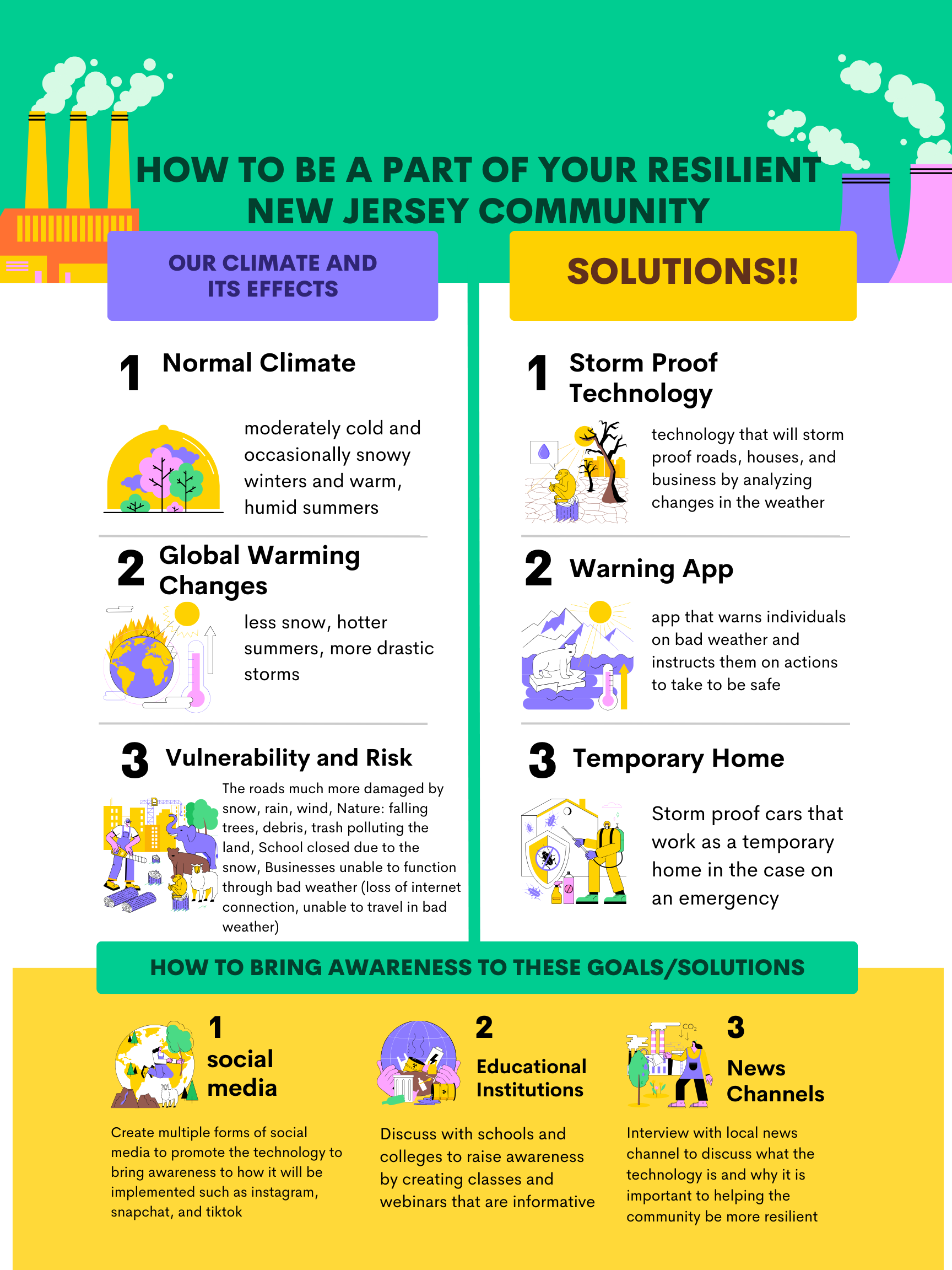In order for a community to be resilient, they must understand climate hazards. For a community with moderately cold winters and warm summers, as my own, the impacts of global warming are prevalent through the less snow, hotter summers, and severe storms. These changes cause vulnerability within roads, parks, schools, and businesses which become at risk. Roads face damage from snow, rain, and wind, while falling trees and debris are dangerous to the well-being of nature. Schools typically are forced to close during heavy snowfall, and businesses struggle from the loss of internet connectivity and travel difficulties in bad weather.
To address these challenges, developing storm-proof infrastructure, such as roads, houses, and businesses, through weather analysis technology is crucial. An app that warns and guides individuals during adverse weather conditions and storm-proof cars acting as temporary shelters during emergencies are essential components of a resilient community.
In order for these solutions to succeed, they must be promoted in a way that prioritizes their importance. This awareness can be generated through social media, engaging with educational institutions, and collaborating with local news channels. Such actions are integral for helping a community become resilient and prepared to thrive under harsh weather conditions.
Contact us
Thank you for your interest in contacting Future Engineers. We look forward to connecting with you!
General Inquiries
support@futureengineers.orgSponsorship Inquiries
sponsor@futureengineers.org
